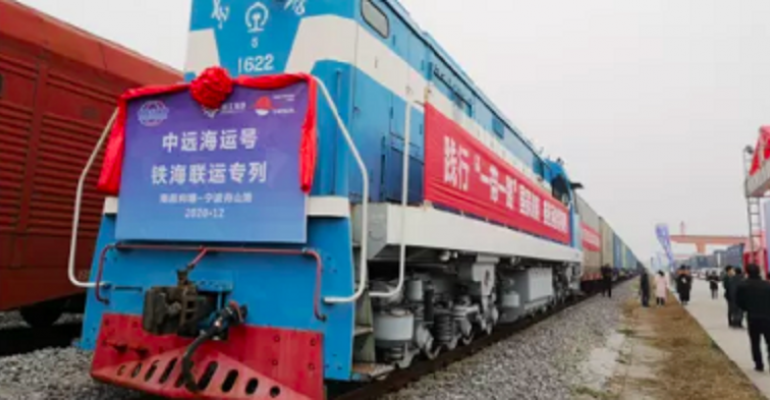A report by UNCTAD on the trade and development impact of the war in Ukraine highlighted that Russia and Ukraine form a key component of the Eurasian Land Bridge. Restrictions on Russian air space, contractor uncertainty and security concerns, all impact both land and air cargo shipments between Asia and Europe.
“While Russian airspace is closed to 36 countries and vice versa, some freight forwarders currently recommend not booking overland shipments between Asia and Europe,” UNCTAD said.
Over the last two years of the pandemic and resulting global supply chain disruption shippers have increasingly turned to rail, air, and even trucking, from China to Europe to beat congestion on the ocean shipping trade between Asia and Europe that has driven freight rates to record levels, and dramatically reduced service reliability.
“In 2021, 1.5 million ocean containers of cargo were shipped by rail west from China to Europe. If the volumes currently going by container rail were added to the Asia – Europe ocean freight demand, this would mean a 5 to 8% increase in an already congested trade route,” the report stated.
The result could be even higher freight rates between Asia and Europe for ocean freight given the constrained capacity situation on the trade, even if at present rates were trending downwards from record highs.
“This is related more to a global trend in the easing of pandemic lockdowns and phasing out of stimulus packages, vis-à-vis slowly improving congestion in some port areas of the world. Upward pressure on prices, however, may soon win out on balance,” UNCTAD said.
With nearly 30 million people locked down in China over Omicron outbreaks, including 17 million in the southern port city of Shenzhen, analysts are warning of huge potential impact on the container supply chain if the situation worsens. Already there are reports of growing queues of ships at ports such as Yantian as while ports remain operating normally, warehouses and factories are closed, and trucking is restricted.
Copyright © 2024. All rights reserved. Seatrade, a trading name of Informa Markets (UK) Limited.
Add Seatrade Maritime News to your Google News feed.  |

